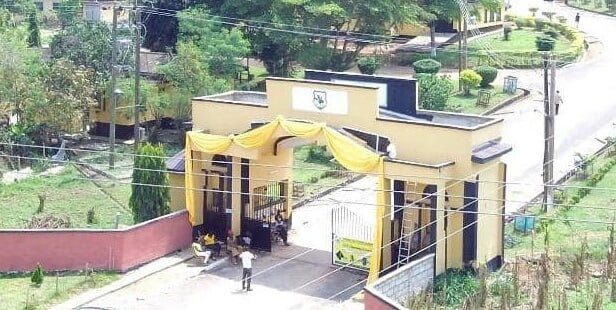
How I Built a Mini Truck for My PhD Project – Igbinosa
Eghosa Igbinosa, a PhD candidate at the University of Benin in Edo State, explains to GODFREY GEORGE how he was able to construct a lightweight vehicle for transporting commodities out of locally found materials.
You just finished building a lightweight car for your PhD. What really spurred this undertaking?
I’ve always aspired to solve issues in my local surroundings. There is a need to enhance industrial procedures and agricultural production techniques in a globe of rapidly growing nations. As a result, there will be more cargo to be carried.
You’ll find that tricycles, which were initially designed to carry human passengers, are now being modified into dangerous utility or cargo vehicles to move products in many Nigerian towns where tricycle usage is common. This is accomplished by creating a carriage facility on the trike’s roof, which makes the tricycle laterally stable, and by extending its longitudinal length or rear overhang well beyond the tricycle’s rear wheel.
This effort to recreate the vehicle for the purpose of moving commodities shows that a significant group of individuals, including merchants, small- and medium-sized company owners, and local farmers, have inadequate transportation demands.
Given how important transportation is to a country’s growth, I felt it was essential to create a local utility vehicle using locally available resources and technology.
What were some of the difficulties you encountered while creating this miniature vehicle, and where did you get the money to do so?
The lack of the appropriate tools needed for the design and manufacture of the vehicle and its components was one of several difficulties I faced while working on the project.
I personally provided all private funding for the project. The cost of creating simple jigs and fixtures, operating the power generator, and managing logistics while working on the project are all included in the cost of developing the utility vehicle. Additional costs include materials for fabricating the vehicle’s components and the cost of tooling.
How much time did it take you to complete the project?
The vehicle took roughly 36 months to construct. This covers both the planning and the building. I took so long mostly because building work was only done on weekends. If the vehicle’s building tasks were performed everyday, I’m sure it would have taken less time to finish.
All of the car’s parts came from regional suppliers, right?
The lightweight utility vehicle was mostly constructed with 67% original, locally made car parts.
The complete body (cabin, doors, and cargo bay) of the utility vehicle, the chassis, the suspension and wheel assembly (spindles, hubs, knuckles, lower control arms), components, dashboard, seats, etc. are all original parts that were made locally for the utility vehicle’s construction.
A little more than 13% of the car’s components are modified, original automotive parts. These include the steering column and rack-and-pinion steering system, as well as the instrument cluster unit, door glass, windshield, and door key mechanism. Consequently, 81% of the vehicle’s parts were produced domestically.
However, an estimated 20% of the vehicle components came from donor cars and were put to immediate use. These components include the axle, gear box, and engine bearings.
How much did you spend overall, and where did you get the money?
The creation of the car cost N1.2 million, and the money came from my own savings.
How has it been received?
I can infer that the study has received excellent feedback from the comments I’ve seen on some of the articles about it.
Many people are happy and proud that the utility vehicle was developed in Nigeria, and they hope that it may start being produced in large quantities right now. I’m pleased and encouraged by the progress. All praise belongs to God.
What is the vehicle’s capacity?
The lightweight (600 kg) utility vehicle has an intended peak speed of 75 km/h and a maximum load capacity of one ton (1,000 lb).
The vehicle’s geometrical parameters result in a wheel length of about 2,145mm and a track width of 1,200mm. It may be used on tiny country roads since the vehicle has the benefit of being able to enter places where larger trucks cannot.
The fact that this particular variant of the vehicle is equipped with an 8.5KW IC engine that resembles certain motor cycles is another eye-catching benefit. This results in a vehicle with minimal maintenance costs, low fuel consumption, and easy repairability for both motorcycle and automobile technicians.
Is this your primary occupation now?
Okay, sure. I perform general engineering and am self-employed. At the University of Benin in Edo State, I’m a PhD engineering student.
Has a career in engineering always been a goal of yours?
Yes, I have always had the desire to become an engineer, and my involvement in many activities as a child reflects this passion or aspiration.
What kind of childhood did you have?
It may be said that growing up in Benin City, Edo State, was an intriguing experience. Even though my late parents weren’t very affluent, they gave my sister and I the right guidance to become the people we are today. I used to attempt to create all of my own toys when I was a youngster. As my brothers and I were not lucky enough to get toys from the large superstores, I can recall creating my own vehicles and aircraft.
Did you ever consider giving up on your academic goals at any point?
Of sure, I say. I faced several obstacles in the course of pursuing my degree, some of which had the potential to put my aspirations on hold, but God Almighty saw me through them all.
First of all, the year I was accepted to the University of Benin to pursue a Bachelor of Engineering in Production Engineering, my father (who is now deceased), resigned from the public service. Due of this, I had extremely restricted access to money. I only had two textbooks over the five years I spent studying. I twice asked Prof. Ibhadode, one of my professors, for money to buy food. As God would have it, he is in charge of the present undertaking I made.
Second, since I had to work and study concurrently for my tests, getting my M.Eng was challenging. Regarding my PhD aspiration, I was admitted to the program a while back and started my research, but I eventually dropped out since I couldn’t balance work with the rigor of the program. I wasn’t discouraged, and the next year I bought a fresh form, but I was too busy doing fieldwork to fill it out.
The third time, I had to purchase a new form, which I was unable to complete for the same reason as the first. I am now finishing up my PhD, much to the glory of God Almighty, even though it first appeared impossible. The lightweight utility vehicle PhD research project was my fourth try at a PhD study.
What do you want to do after you finish your PhD?
I currently don’t plan on teaching in a classroom at any point in the near future. But when I get my PhD, I’m excited to start mass-producing this car model and additional types.
What type of help will you need to construct this car in large quantities?
I need technical and financial partners to help me at this point in the vehicle’s development. In order to mass-produce the present model of the vehicle and future versions of the vehicle, including further designs of electric and IC-powered automobiles and buses as well, I would want to use this occasion to appeal to the government, the commercial sector, and people to join forces with me. They should do study in other fields, including aeronautics, where I am also quite skilled.
Do you believe that manufacturers have received help from the Nigerian government?
The government has been helpful, but I think it can do more to help Nigerian producers than it has so far. I would especially like to see a scenario where the government develops more advantageous policies to safeguard indigenous manufacturers from fierce competition with their foreign counterparts, as well as to provide access to foreign exchange, a reduction or waiver of import duties on spare parts, materials, and specialty machinery for indigenous manufacturers in Nigeria, among other things.
How gratifying have you found engineering to be?
If the Nigerian government fully supports engineering practice in Nigeria by creating an atmosphere that is conducive to general engineering practice, the advantages would be enormous and might even be superior. One method to do this is to make money accessible for research projects.
What recommendations do you have for the government regarding the teaching of Science subjects to young children?
In terms of the teaching of Science, Technology, Engineering, and Mathematics in the context of educational policy in Nigeria, the government can increase the effectiveness of the policy by intensifying the teaching of these four subject areas along with significant practical sections and assignments in primary and secondary schools throughout Nigeria. This may encourage young Nigerian students to be creative and committed to developing technology and unique concepts.





Wow. That’s really impressive
Impressive
Nice one
Interesting
Good he tried
Wow this is so impressive
Happy
Good
Nigerians are talented
Great
Very nice
This is very awesome
Totally awesome
This is very great
Keep it up looking forward to you
Impressed
Nice work
Bravo
Amazing
Splendid
Creativity
Great
Wow
Good
Ok
Amazing
Wonder
Really amazing
Ok
Wow, this so good
Awesome
💯💯✍️
I’m I the only one unable to withdraw?🥲
Good
wonderful
That’s very impressive hope he gets finance
Wow 😃 this is God given.
I hope our government give him the support he needs.
Wish him greater heights in his endeavors.
No one’s saying anything 😥😑
Wow that’s awesomely wonderful
Alright
This is
Yh
Yh
Wow great
Yh
Good
Good
Wow that’s very interested 👏
Wow
Cool
What do you want?
Wow
Awesome.
Adorable
Good
Very Impressive
The guy is really talented
Nice truck
Fantastic
Excellent
Good
Very good
How
What a great innovation
Very impressive
Very much
Okay
Its not easy at all to produce a car in Nigeria
Good
You are good to go, but Gov’t support is the problem.
Dey play
Creative
Good
Ok
I admire your intelligence
Let’s wait
Mini truck
Wow
That’s cool
Fantabulous 🥰
Hardworking youth.
Amazing
Thanks
Go to
Wow
Nice one
Great
Very impressive, keep up the good work
Love it, keep the good work rolling
Very impressive 👍
Fantastic
Ok
Great talent
Talented man
I love your courage
Wow
Great
Fantastic
Fantastic
Cool
Chaii
Nice
Nigeria has raw talent
What
I’m use to it
Omoh ehnn 😅
Wow
Amazing
That was a nice idea
Amazing job
Good job
Ok
Impressive
He’ll go far
Na money remain
Good job
Wow nice
Bro✌
Impressive
Heyah Weldon
Well done
Beautiful
Wow
This is real talent
I tap from that Grace
I pray he gets Divine help
Fur i
That’s really impressive
Good
Cool
Great ????
danfo driver
nah suffer dey call. y u no make plane.
Wow
This is great
Interesting
Good
Great
Good
Amazing
He needs a helping hand
Awesome
That’s great
Awesome